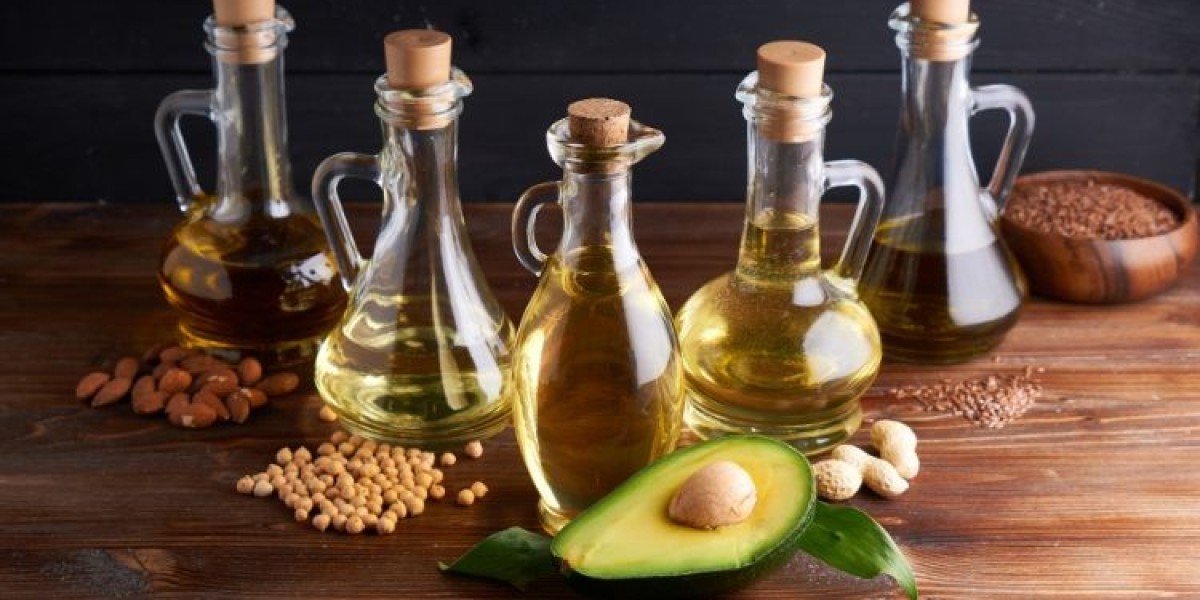In the vibrant landscape of Latin America, the vegetable oil market has emerged as a pivotal sector, reflecting both the region's agricultural prowess and its significance in the global economy. With a volume reaching 22.45 MMT in 2023, the market is poised for further expansion, projected to grow at a steady CAGR of 1.45% between 2024 and 2032, ultimately reaching a volume of 25.62 MMT. This growth trajectory is underpinned by several key factors and developments reshaping the industry landscape.
Market Overview
The Latin America Vegetable Oil Market Size encompasses a wide array of products derived from various oilseeds, including soybean, palm, sunflower, and canola, among others. These oils serve as essential ingredients in food preparation, industrial applications, and biodiesel production, driving demand across diverse sectors.
Key Benefits
Vegetable oils offer a multitude of benefits, both from a nutritional and industrial perspective. Rich in essential fatty acids and vitamins, they form the cornerstone of a healthy diet. Moreover, their versatility extends to industrial applications, where they serve as cost-effective alternatives in various processes, such as lubrication, cosmetics, and pharmaceuticals.
Key Industry Developments
Recent years have witnessed significant developments in the Latin America vegetable oil market. Advancements in extraction technologies, coupled with increasing investments in research and development, have enhanced production efficiency and product quality. Furthermore, growing consumer awareness regarding the health benefits of vegetable oils has spurred demand, prompting manufacturers to diversify their product offerings and explore sustainable sourcing practices.
Driving Factors
Several factors are driving the growth of the Latin America vegetable oil market. The region's abundant arable land and favorable climatic conditions foster robust agricultural output, ensuring a steady supply of oilseeds. Additionally, rising population, changing dietary preferences, and urbanization have fueled demand for processed foods and culinary oils. Furthermore, the growing trend towards natural and organic products has created new avenues for market expansion.
COVID-19 Impact
The COVID-19 pandemic has exerted both short-term disruptions and long-term implications on the vegetable oil market in Latin America. Supply chain disruptions, labor shortages, and fluctuating demand have posed immediate challenges for industry players. However, the pandemic has also highlighted the importance of food security and sustainable agriculture, driving investments in resilience and innovation within the sector.
Restraining Factors
Despite favorable growth prospects, the Latin America vegetable oil market faces certain challenges. Environmental concerns, including deforestation and land degradation associated with palm oil production, have prompted calls for stricter regulations and sustainable practices. Moreover, volatility in global commodity prices and currency fluctuations pose risks to market stability, necessitating proactive risk management strategies.
Market Segmentation
The Latin America vegetable oil market can be segmented based on various factors, including product type, application, and distribution channel. Common product types include soybean oil, palm oil, sunflower oil, and others. Applications span across food processing, biodiesel production, cosmetics, and pharmaceuticals, among others. Distribution channels encompass supermarkets/hypermarkets, convenience stores, online retail, and food service providers.
Market Outlook
Looking ahead, the Latin America vegetable oil market is poised for steady growth, driven by evolving consumer preferences, technological advancements, and regulatory initiatives. Manufacturers are expected to focus on product innovation, sustainability, and market diversification to gain a competitive edge. Moreover, strategic collaborations and mergers & acquisitions are likely to reshape the industry landscape, fostering greater consolidation and integration.
Trends
Several trends are shaping the Latin America vegetable oil market. The rising popularity of plant-based diets and organic products is driving demand for healthier and sustainably sourced oils. Moreover, the shift towards clean energy and renewable resources is spurring investments in biodiesel production, leveraging vegetable oils as a viable alternative to fossil fuels. Additionally, growing awareness of food safety and quality standards is driving consumer preference for certified and traceable products.
Industry Segmentation
The Latin America vegetable oil industry encompasses a diverse ecosystem of stakeholders, including growers, processors, manufacturers, distributors, and retailers. Each segment plays a critical role in ensuring the seamless flow of products from farm to table, adhering to stringent quality and safety standards. Collaboration and integration along the value chain are essential for enhancing efficiency, transparency, and sustainability.
Regional Analysis/Insights
Latin America's diverse geography and socio-economic landscape present unique opportunities and challenges for the vegetable oil market. Brazil and Argentina emerge as key players, accounting for a significant share of production and exports. The Amazon rainforest region, primarily in Brazil, faces scrutiny over deforestation linked to soybean and palm oil cultivation, highlighting the need for sustainable practices and conservation efforts. Meanwhile, countries like Colombia, Peru, and Ecuador offer untapped potential for oilseed cultivation, supported by government incentives and agro-climatic suitability.
Analysis
In-depth analysis of the Latin America vegetable oil market reveals a dynamic and evolving landscape, driven by a combination of internal and external factors. Market participants must navigate regulatory complexities, consumer trends, and competitive dynamics to capitalize on emerging opportunities and mitigate risks effectively. Strategic planning, market intelligence, and agility are critical for sustaining growth and profitability in an increasingly competitive environment.
Top Impacting Factors
Several factors exert significant influence on the Latin America vegetable oil market, including macroeconomic trends, geopolitical developments, technological disruptions, and environmental concerns. Volatility in commodity prices, changing consumer preferences, regulatory shifts, and weather patterns can impact market dynamics and profitability. Understanding and effectively managing these factors are essential for strategic decision-making and risk mitigation.
Target Audience
The Latin America vegetable oil market caters to a diverse audience, including food manufacturers, retailers, distributors, investors, policymakers, and consumers. Industry stakeholders seeking market insights, investment opportunities, and strategic partnerships can benefit from comprehensive analysis and actionable intelligence. Moreover, consumers concerned about health, sustainability, and ethical sourcing can make informed choices based on transparent and reliable information.
Major Key Players
- Archer Daniels Midland Company
- Bunge Limited
- Cargill Incorporated
- Louis Dreyfus Company B.V
- Aceitera General Deheza S.A
- Agropalma S/A
- Camilo Ferrón Chile S.A.
Click here to checkout our other reports:- https://www.expertmarketresearch.com.au/








